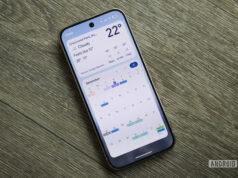The Steam Deck is a powerful piece of portable gaming hardware, but one of its weak points is battery life. Even the OLED model can’t run any longer than 12 hours, and that range shrinks to 8 hours on an LCD system. Thankfully, if you want to stretch your gaming sessions out as far as possible, there are some tactics you can try.
QUICK ANSWER
The Steam Deck OLED runs anywhere between 3 to 12 hours, while LCD models last between 2 to 8. There are software settings that can improve battery life, but you may ultimately need a portable power bank if you’re not plugged in.
JUMP TO KEY SECTIONS
How long is the Steam Deck battery life?
As mentioned, the original LCD Steam Deck gets anywhere between 2 to 8 hours, drawing from a 40Whr battery. The Steam Deck OLED lasts between 3 to 12 hours, not just because of a larger 50Whr battery, but because of improved power efficiency.
Let’s explain. OLED screens can shut off pixels completely, whereas LCDs always have one or more backlights on. That’s why dark scenes on an LCD are never completely black. On top of that, the newer Deck has a 6nm version of AMD’s Aerith APU, whereas the original APU is slightly larger and less efficient at 7nm.
Why is the hour range so wide for both models, though? Mostly it comes down to processor demand. The harder your Deck needs to work, the more power it consumes. If your Deck is sitting idle or playing a simple 2D strategy game, very little processor activity is involved. Conversely, detailed 3D action games like Elden Ring push the APU to its limits, and do it non-stop. Combine that with power drains like wireless radios and HDR, it’s almost surprising that a Deck can handle a PC game for 3 hours.
How to improve battery life on your Steam Deck
You’ve got an assortment of software options here, but the ultimate solution may involve hardware.
- Choose your games wisely: It’s often tempting to launch a flashy new 3D action game, but if you need your Deck to last a while between charges, consider playing a 2D puzzle, strategy, adventure, or role-playing game instead.
- Frame rate adjustment: Scaling frame rate can be a significant power-saver. Even though the Steam Deck OLED can handle up to 90fps (since it has a 90Hz panel), not all games require that smoothness, and many players may not even notice a drop. SteamOS offers convenient tools to cap frame rate at 30fps.
- Dim the lights: After its processor, a Deck’s display is probably the biggest power drain, and the brighter your screen is the more energy it consumes. Consider lowering brightness as far as you can (via Settings) without making visuals hard to discern.
- Tweak graphics settings: Since the Steam Deck is essentially a compact PC, you’ve got a similar level of control over graphics. Opting for medium or low detail in a game can prolong your battery life by reducing demand on the APU.
- Limit thermal power: You can also use the SteamOS Settings menu to put a hard cap on the APU’s power usage. It’s a blunt solution that can drastically affect performance, but it may be a lifesaver if you’re in desperate need of conserving power.
- Keep a power bank handy: If you’re only able (or willing) to make so many compromises, a portable battery may be in order. Check out the section below for some recommendations.
What’s the best power bank for your Steam Deck?
You’ll want something with at least 45W of output, mirroring the Steam Deck’s USB-C charger. You should also aim for a battery with the highest mAh (milliamp-hour) rating you can afford that’s still compact enough to be convenient. Here are some of the best options available in 2024:
- Anker 747 Power Bank ($129.99 at Amazon): The 747 offers a 25,600mAh capacity and multiple PD (Power Delivery) charging ports. For the money you also get a charging brick, a cable, and a carrying pouch.
- Shargeek Storm 2 Power Bank ($229 at Amazon): It’s the most expensive option on this list, but the Storm 2 matches the 747’s capacity with 100W fast charging, an aesthetically appealing transparent shell, and an LCD with details like temperature and incoming or outgoing wattage.
- Krisdonia AC Laptop Power Bank ($150 at Amazon): This hefty 27,000mAh battery lets you connect the AC charger that came with your Steam Deck. It can handle up to 130W of output, which should be enough to charge multiple devices without slowdown.
- Anker GaNPrime Power Bank ($99 at Amazon): While it’s limited to 10,000mAh, this battery does support 65W charging and can plug directly into a wall outlet, which leaves all three of its USB ports free for devices.
FAQs
LCD Steam Decks are limited to between 2 to 8 hours, depending on settings and processor demand. OLED models fare much better, lasting between 3 and 12 hours.
The answer here is a little complex. The original LCD Deck gets between 2 and 8 hours, which is comparable to the LCD Switch’s 2.5 to 6.5 hours. The OLED Deck manages 3 to 12 hours, which better than either LCD option, and potentially longer than the OLED Switch’s 4.5 to 9 hours. The OLED Switch does have superior low-end runtime, however, so it could be worth getting if you want more guaranteed playtime.
Yes, you can use your Steam Deck while it’s charging. In fact that’s recommended when it’s convenient.
A Steam Deck’s battery will eventually degrade, like all lithium-ion batteries, but the process should be slow and gradual. Talk to Valve if there’s a sharp and sudden drop in battery life.
You can improve the longevity of your battery by avoiding charging to 100% unless you need maximum runtime. 80% is the sweet spot. You should also keep your Deck out of excessively hot or cold conditions — don’t leave your Deck baking in the Texas sun, for example.
Like all modern devices, the Steam Deck should automatically stop charging once it reaches 100%, protecting it from overcharging.
While the Steam Deck is protected against overcharging, it’s generally better to unplug it once charged to maintain battery health.
The Steam Deck does consume some battery power in sleep mode, but it’s significantly less than when the device is in use.










